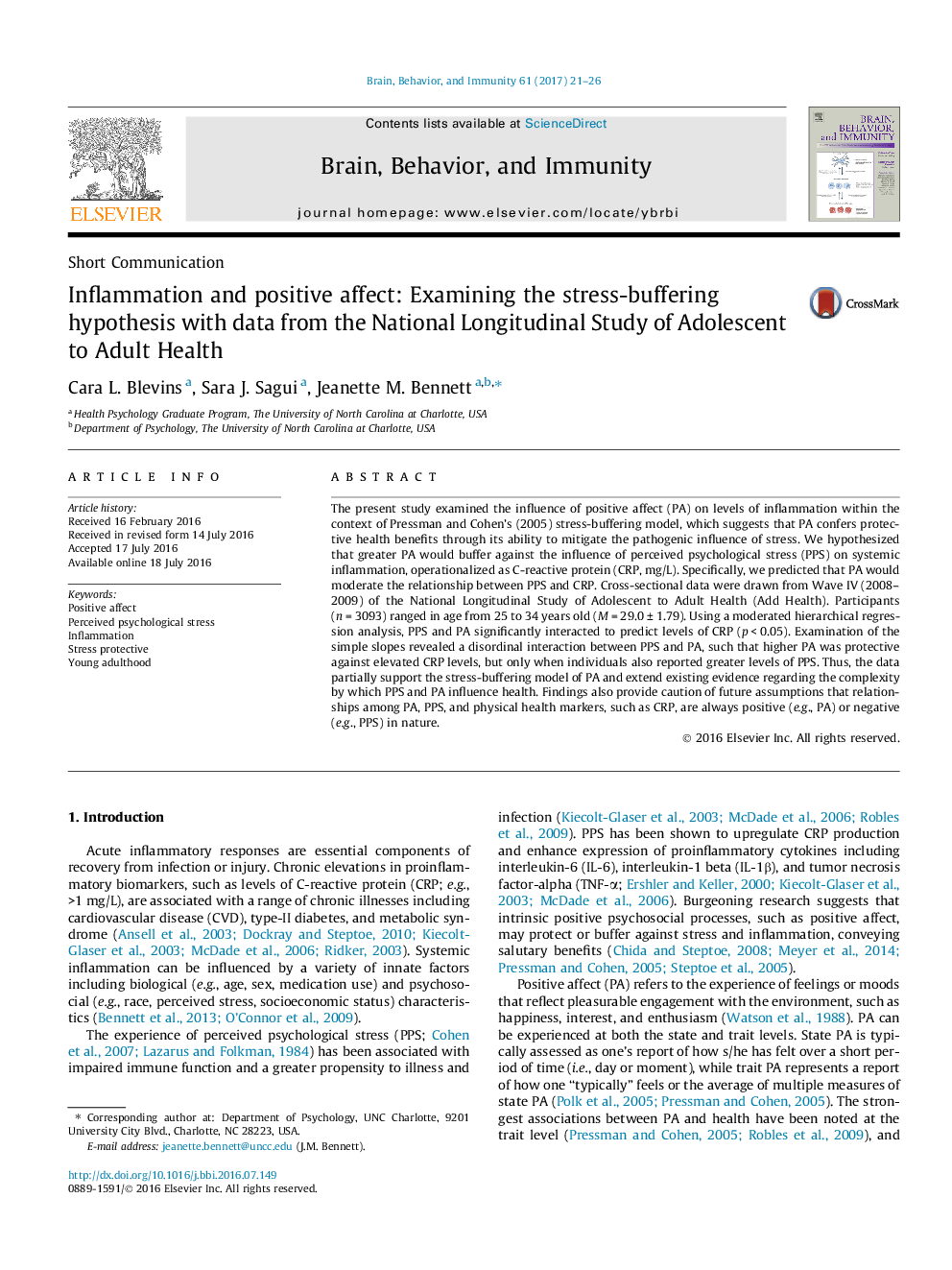| کد مقاله | کد نشریه | سال انتشار | مقاله انگلیسی | نسخه تمام متن |
|---|---|---|---|---|
| 5040684 | 1473906 | 2017 | 6 صفحه PDF | دانلود رایگان |
• Stress-buffering hypothesis was tested in a large national sample of young adults.
• PA and stress interacted to predict CRP levels in unadjusted and adjusted models.
• Salutary effects of PA appear to be contextually dependent on stress levels.
• Positive and negative affect differentially influenced CRP levels.
The present study examined the influence of positive affect (PA) on levels of inflammation within the context of Pressman and Cohen’s (2005) stress-buffering model, which suggests that PA confers protective health benefits through its ability to mitigate the pathogenic influence of stress. We hypothesized that greater PA would buffer against the influence of perceived psychological stress (PPS) on systemic inflammation, operationalized as C-reactive protein (CRP, mg/L). Specifically, we predicted that PA would moderate the relationship between PPS and CRP. Cross-sectional data were drawn from Wave IV (2008–2009) of the National Longitudinal Study of Adolescent to Adult Health (Add Health). Participants (n = 3093) ranged in age from 25 to 34 years old (M = 29.0 ± 1.79). Using a moderated hierarchical regression analysis, PPS and PA significantly interacted to predict levels of CRP (p < 0.05). Examination of the simple slopes revealed a disordinal interaction between PPS and PA, such that higher PA was protective against elevated CRP levels, but only when individuals also reported greater levels of PPS. Thus, the data partially support the stress-buffering model of PA and extend existing evidence regarding the complexity by which PPS and PA influence health. Findings also provide caution of future assumptions that relationships among PA, PPS, and physical health markers, such as CRP, are always positive (e.g., PA) or negative (e.g., PPS) in nature.
Journal: Brain, Behavior, and Immunity - Volume 61, March 2017, Pages 21–26
